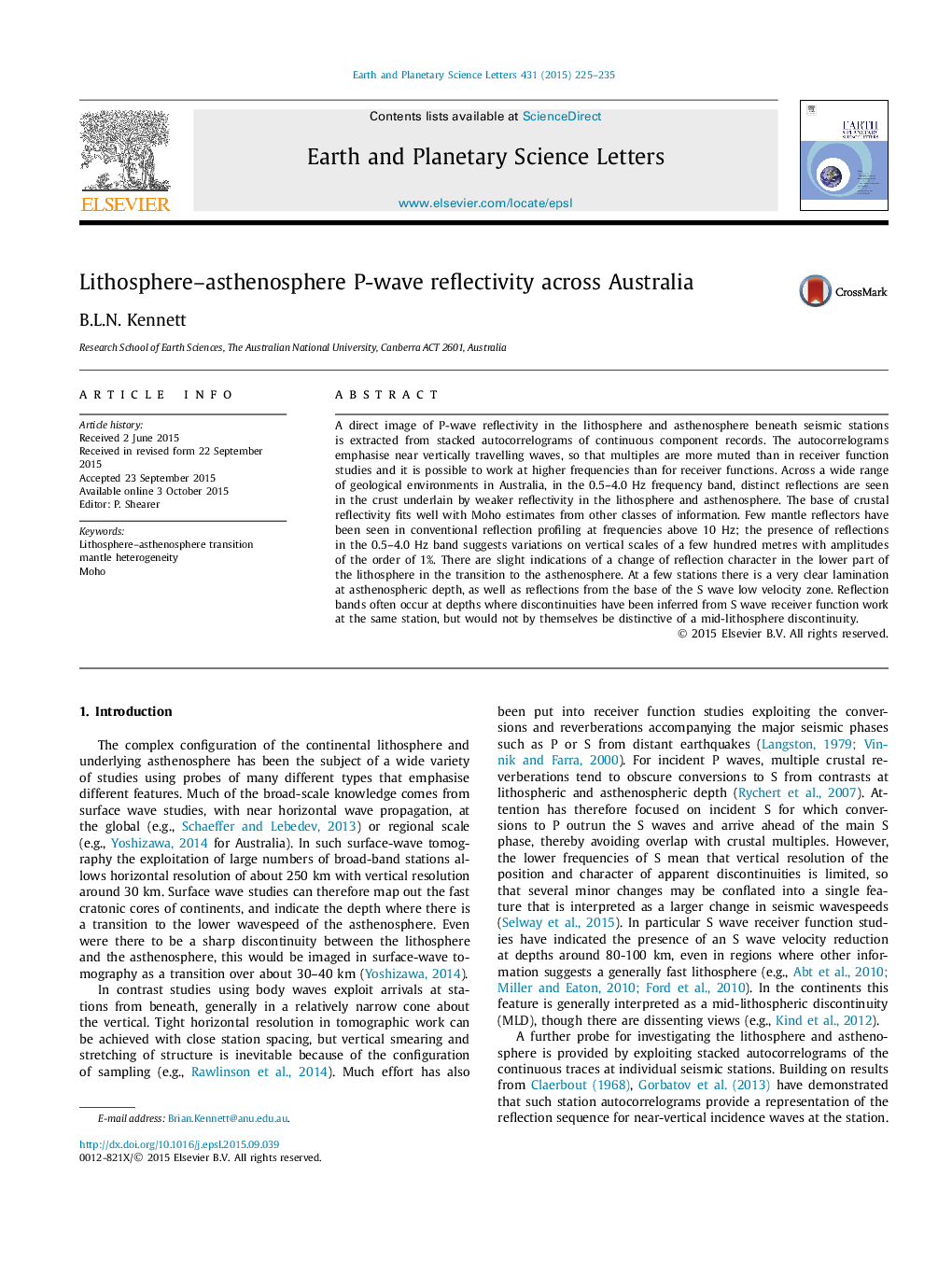| Article ID | Journal | Published Year | Pages | File Type |
|---|---|---|---|---|
| 6427789 | Earth and Planetary Science Letters | 2015 | 11 Pages |
Abstract
A direct image of P-wave reflectivity in the lithosphere and asthenosphere beneath seismic stations is extracted from stacked autocorrelograms of continuous component records. The autocorrelograms emphasise near vertically travelling waves, so that multiples are more muted than in receiver function studies and it is possible to work at higher frequencies than for receiver functions. Across a wide range of geological environments in Australia, in the 0.5-4.0 Hz frequency band, distinct reflections are seen in the crust underlain by weaker reflectivity in the lithosphere and asthenosphere. The base of crustal reflectivity fits well with Moho estimates from other classes of information. Few mantle reflectors have been seen in conventional reflection profiling at frequencies above 10 Hz; the presence of reflections in the 0.5-4.0 Hz band suggests variations on vertical scales of a few hundred metres with amplitudes of the order of 1%. There are slight indications of a change of reflection character in the lower part of the lithosphere in the transition to the asthenosphere. At a few stations there is a very clear lamination at asthenospheric depth, as well as reflections from the base of the S wave low velocity zone. Reflection bands often occur at depths where discontinuities have been inferred from S wave receiver function work at the same station, but would not by themselves be distinctive of a mid-lithosphere discontinuity.
Keywords
Related Topics
Physical Sciences and Engineering
Earth and Planetary Sciences
Earth and Planetary Sciences (General)
Authors
B.L.N. Kennett,
